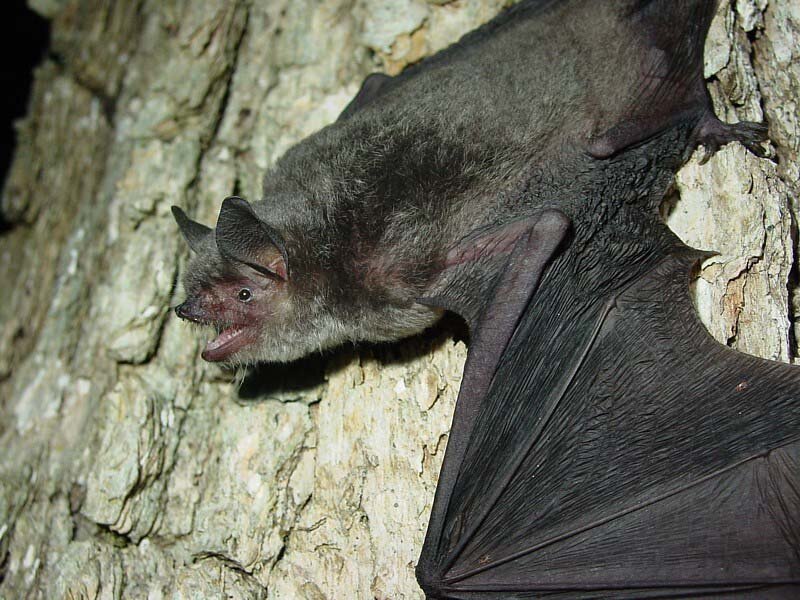Monitoring indicators of ecosystem health at Tyson Research Center and across the St. Louis metro region
Being based at WashU’s Tyson Research Center - a 2,000 acre, university-owned field station on the outskirts of St. Louis, MO - affords us the opportunity to monitor and contribute to improving ecosystem health in the region. We work closely with Beth Biro (Tyson Natural Resources Coordinator & Staff Scientist) on the projects below, and we use data from these projects to inform land management strategies.
Beth biro, co-pi on ecological monitoring projects, shown here with canine field assistants Katla Adalsteinsson plazas and Rufus Biro
student members of the tyson conservation corps regularly help with these projects to gain hands-on training in applied conservation research.
Gray Bat (Myotis grisescens), credit: adam mann
Threatened and endangered bat populations
More information coming soon.
St. Louis Wildlife Project (Urban Wildlife Information Network)
The St. Louis Wildlife Project was established in 2018 in collaboration with Prof. Whitney Anthonysamy at the St. Louis College of Pharmacy. Through this project, St. Louis serves as a partner city in the Urban Wildlife Information Network, an initiative based at the Lincoln Park Zoo in Chicago, which is the first global network collecting urban wildlife data. The St. Louis Wildlife Project puts St. Louis on the cutting edge of urban wildlife research and its implications for sustainable urban planning and conservation of urban biodiversity.
Bobcat (lynx rufus) captured on a camera trap survey image
adult spotted salamander (ambystoma maculatum) at Tyson Research center
Amphibian diversity and abundance in artificial ponds
The spotted salamander (Ambystoma maculatum) is our flagship species at Tyson Research Center, owing to the foundational research on this species conducted by Dr. Owen Sexton, former Tyson Director and professor of biology at WashU.
More information coming soon.
white-tailed deer photographed in annual fall population survey
White-tailed deer population at Tyson Research Center
More information coming soon.







